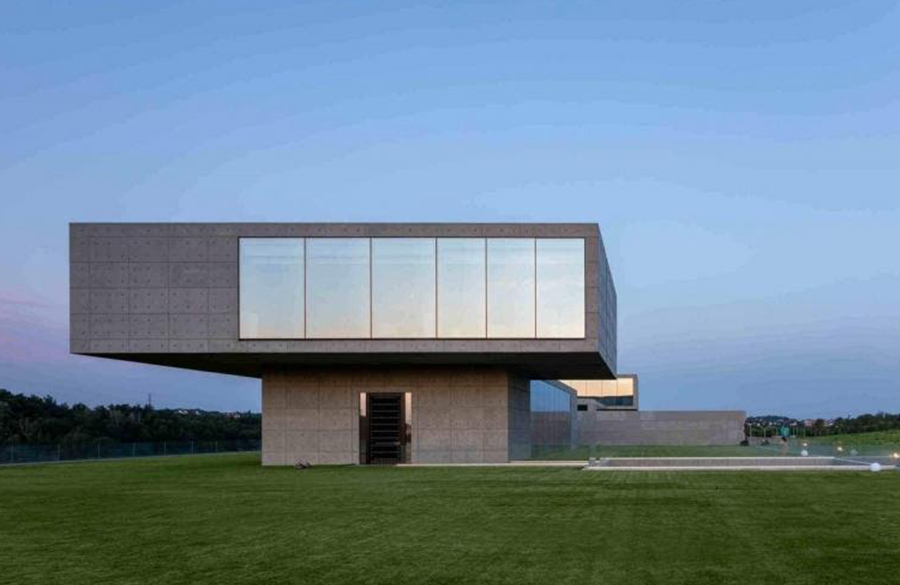What Are The Principles Of Minimalist Architecture?

When it comes to designing your home or office, minimalist architecture has become increasingly popular in recent years. It is easy to see why - its clean lines, functional spaces and simple beauty have captured the hearts and minds of many homeowners and designers alike. However, designing a minimalist space is not as straightforward as it seems. There are several key things to keep in mind if you want to create a minimalist masterpiece:
1. Less is More
The first and most important thing to remember when designing a minimalist space is that "less is more". This means that you should focus on simplicity and functionality rather than filling your space with unnecessary clutter. Avoid any unnecessary accessories or decor that might detract from the simple and elegant beauty of your space.
2. Choose Your Color Scheme Carefully
Minimalist spaces are characterized by a neutral color scheme. Whites, greys, and beige are the most commonly used colors in minimalist design. Choosing the right color scheme is vital to creating a minimalist feel. You can add pops of color through your accessories, but it's important to keep them muted and subtle.
3. Create a Coherent Overall Design
When designing your minimalist space, it's important to think about the overall design. Every piece of furniture should be carefully selected to add to the overall aesthetic of the room. Avoid any pieces that don't "fit" with the overall feel of the room. If you stick to this rule, you'll end up with a space that is coherent, functional, and beautiful.
4. Take Your Time With Lighting
Lighting is a crucial element in any space, but it's especially important in minimalist design. You want to create a space that is bright, airy, and open. Take your time to choose the right lighting fixtures that will complement your overall aesthetic. You can also add natural light through the use of large windows or skylights to create a more natural and open feel.
5. Consider Negative Space
Negative space is an essential part of minimalist design. It refers to the space between objects in a room. In minimalist design, negative space is just as important as positive space. You want to create a space that feels open and airy, so make sure to leave plenty of space between your furniture and accessories.
6. Use High-Quality Materials
When designing a minimalist space, it's important to use high-quality materials. You want your space to feel luxurious, even if it's understated. Stick to materials like marble, polished concrete, and natural woods to add a touch of luxury to your space without detracting from the overall minimalism.
7. Think About Functionality
Functionality is key when it comes to minimalist design. Think about how you will use the space and what you need. Every piece of furniture and every accessory should serve a specific purpose. This way, you can ensure that your space is both beautiful and functional.
8. Focus on the Details
The details are what really make a minimalist space shine. Something as simple as a well-placed plant or a unique vase can add a touch of personality to your minimalist space. However, remember to keep it simple. You don't want to overdo it or create clutter.
FAQs
Q: Is minimalist design only suitable for modern homes?
A: No, minimalist design can be adapted to any style of home. Whether you have a traditional or modern home, minimalist design can work. It's all about keeping things simple and functional.
Q: What kind of accessories can I use in a minimalist space?
A: When it comes to accessories in a minimalist space, less is more. Stick to simple and functional accessories. Think about items like woven baskets, unique coffee table books, and interesting vases.
Q: How can I add color to a minimalist space?
A: It's important to keep the color scheme neutral in a minimalist space, but you can add pops of color through your accessories. Think about adding a brightly colored throw pillow or piece of art to add a touch of personality to your space.
Q: Does a minimalist space have to be completely devoid of decoration?
A: No, a minimalist space does not have to be completely devoid of decoration. The key is to keep it simple and understated. Use neutral colors and simple accessories to create a space that is both beautiful and functional.
Q: Can I use patterns in a minimalist space?
A: Yes, you can use patterns in a minimalist space, but it's important to keep them subtle and muted. Stick to simple patterns like stripes or geometric shapes to add interest without detracting from the overall simplicity of the space.
If you keep these tips in mind when designing your minimalist space, you'll end up with a beautiful and functional space that you'll love for years to come.




Post a Comment for "What Are The Principles Of Minimalist Architecture?"